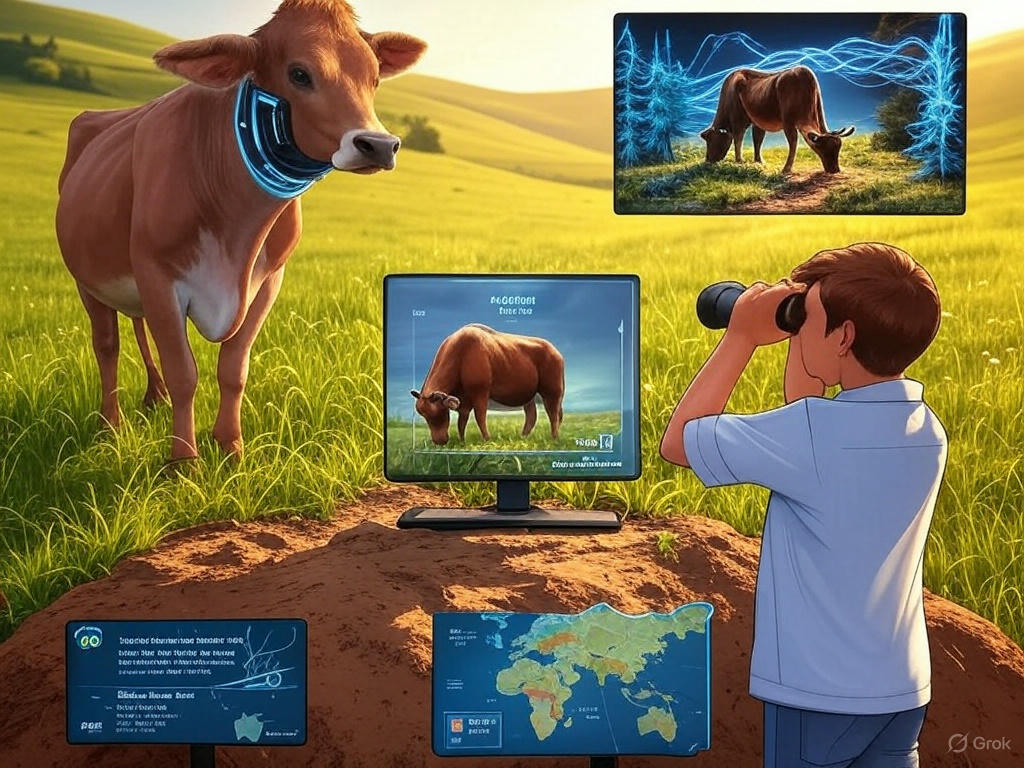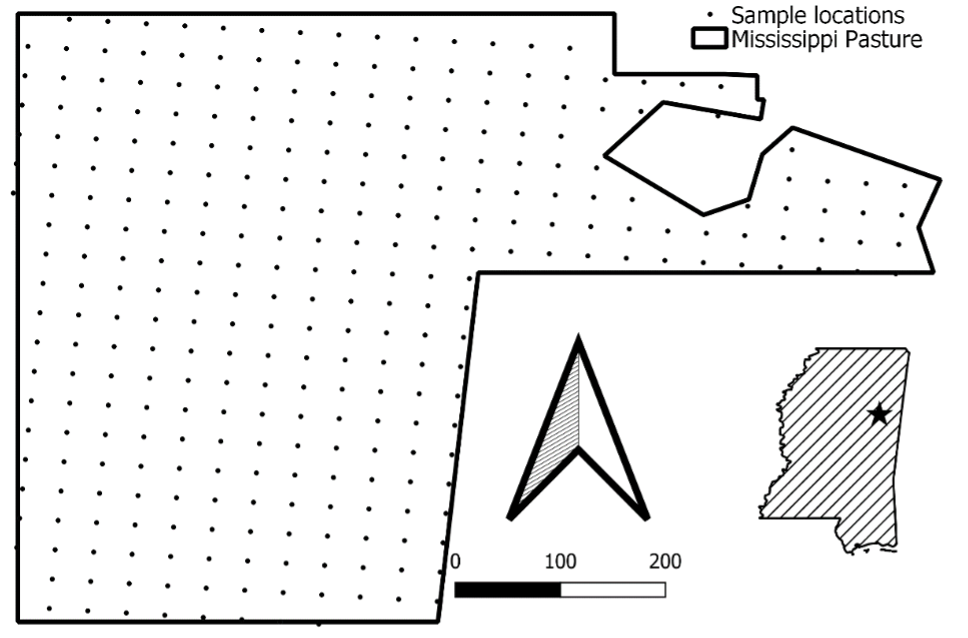Automated weight and body mass measurement in grazing steers
Written on July 1st , 2023 by Ira Parsons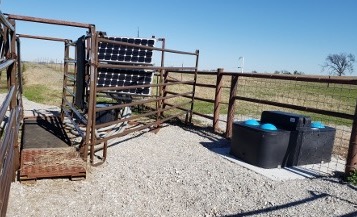
Body weight is a critical component for monitoring animal body mass, body condition, nutritional status, and health. However, traditional methods of collecting body weight are stressful, costly, and logistically impractical with cattle on extensive landscapes. Remote systems capable of collecting individual animal body weight provide a potential solution, but automatic systems may collect spurious measurements. The objectives of this study were to 1) describe the utility of using a remote weight capture system, 2) develop methods for identifying and removing spurious measurements, and 3) cross-validate automatically collected weights with static chute collected weights. Beef steers (n = 10) were tagged with electronic Radio Frequency Identification tags in an improved pasture (± 11.54 hectares) containing Bermuda (Cynodon dactylon) and Tall Fescue (Festuca arundinacea) and inter-seeded with Annual Ryegrass (Secale cereale). A walk-over-weigh (WOW) system was designed from a platform scale connected to a TruTest® scale head and paired with a computer to save data files. In total, 5,466 raw weights associated with individuals were collected containing plausible weights (0 kg < weight < 1,000 kg). We assessed the use of whole herd and individual means ± 1 standard deviation calculated either daily or over the entire trial to identify potential outliers. Additionally, 3 data smoothing methods were tested: a linear quadratic model, cubic splines, and polynomial regression. Each method was evaluated for total weight events recorded, event frequency, measured body mass and average daily gain. Further, accuracy and precision was calculated using cross-validation with paired chute weights (n = 8). Whole herd means ± 1 SD identified the fewest spurious data points and showed a stronger relationship with paired chute weights (R2 = 0.90) whereas individual daily means ± 1 SD identified the most and exhibited a weaker relationship (R2 = 0.68). Repeated quadratic regression models provided the best results, identifying 3,759 clean weight points and providing an R2 = 0.96 between paired chute and WOW measurements. A real-time simulation analysis found that both individual and the herd means ± 1 SD performed similarly with an average of 30% of data classified as spurious and removed from the analysis, resulting in agreement (R2 = 0.93 for both individual and herd means) between chute and WOW weight measurements. These results indicate the utility of using a simple WOW system to collect data for measuring individual animal body mass and associated metrics, which has implications on making management and marketing decisions in near real-time.
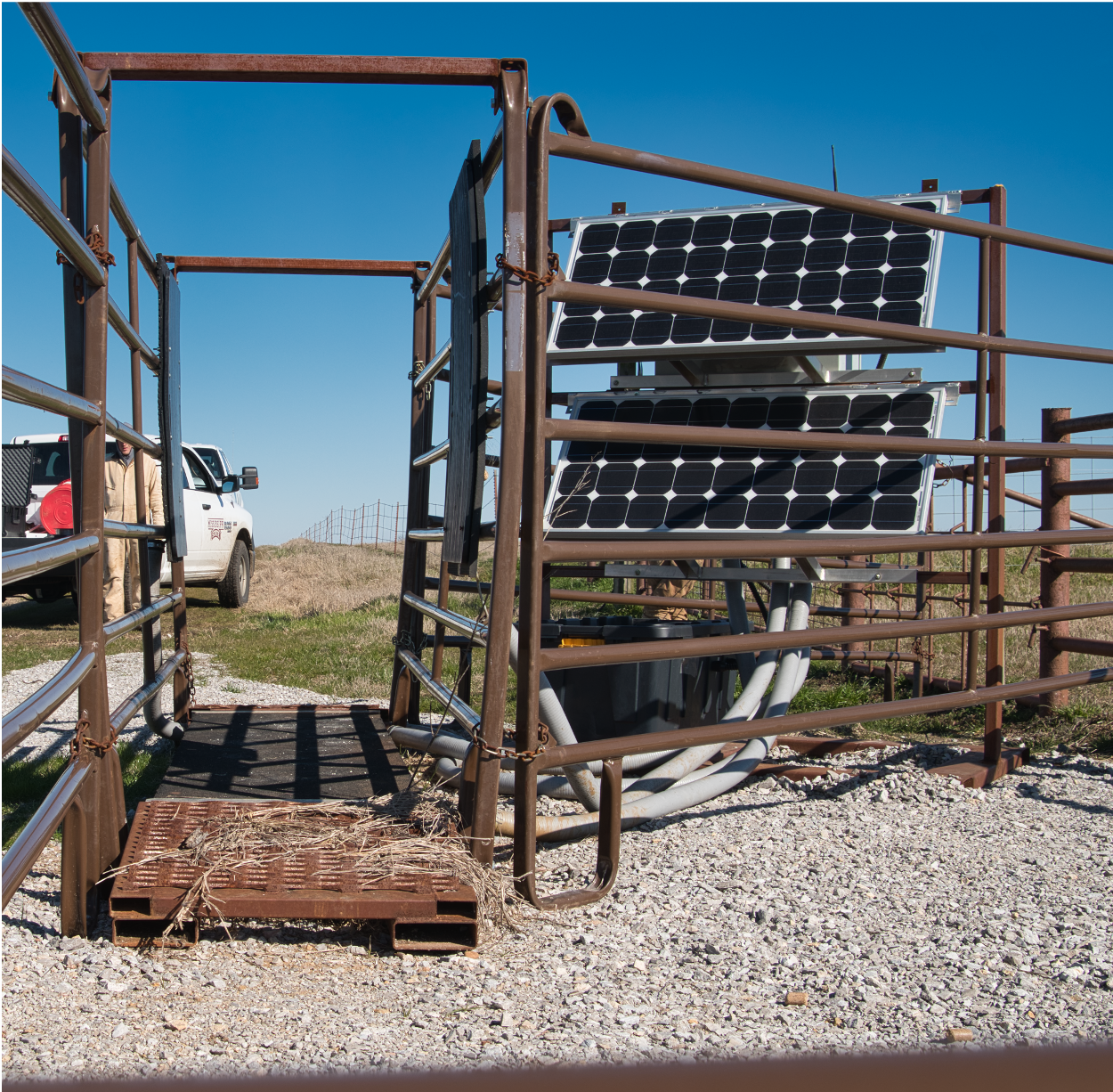
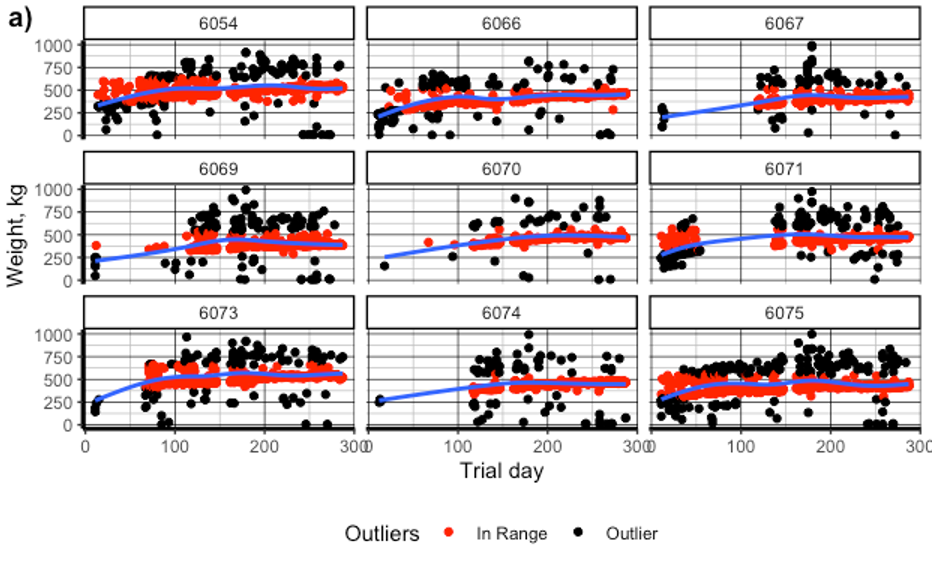
Reference: Parsons et al., 2023

